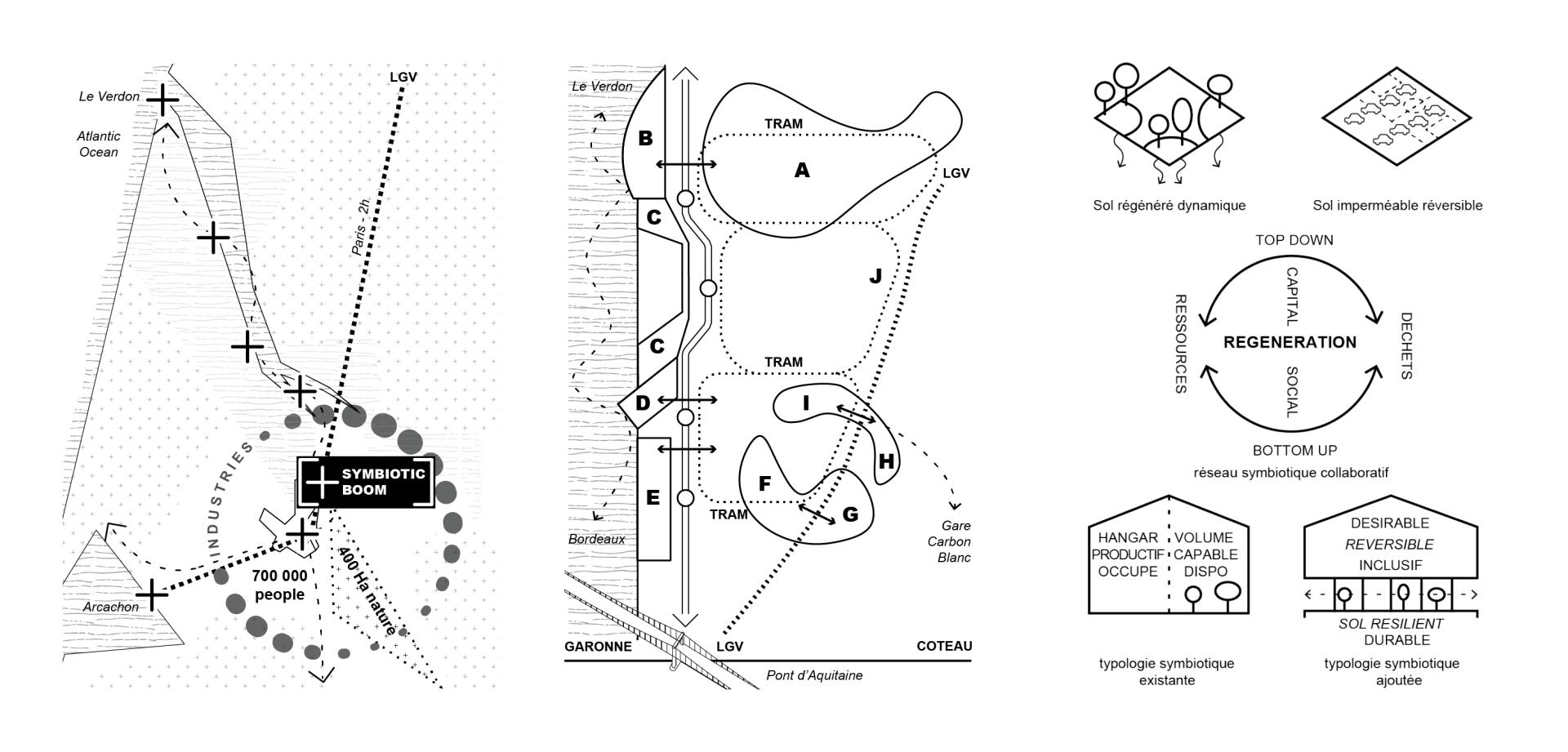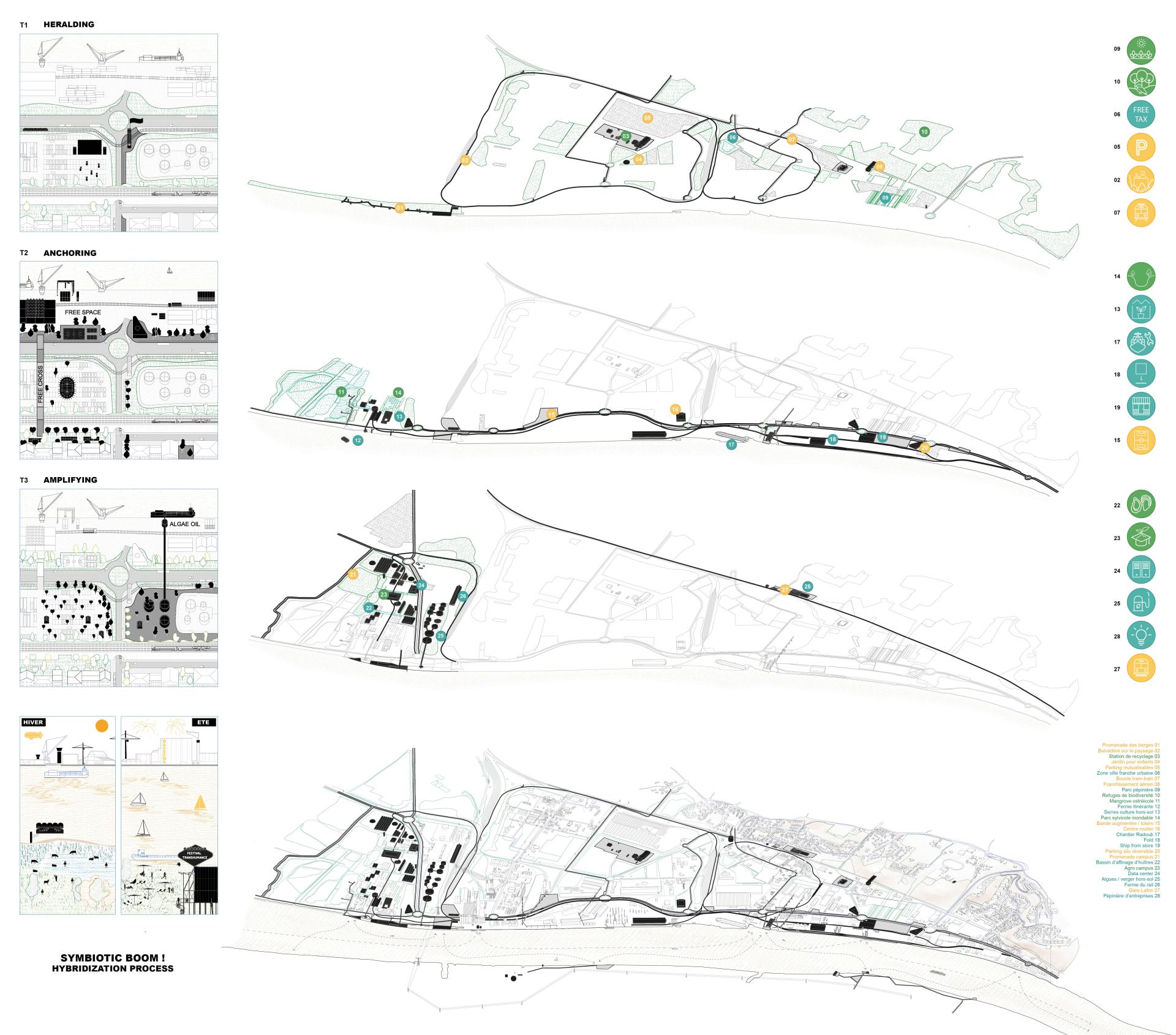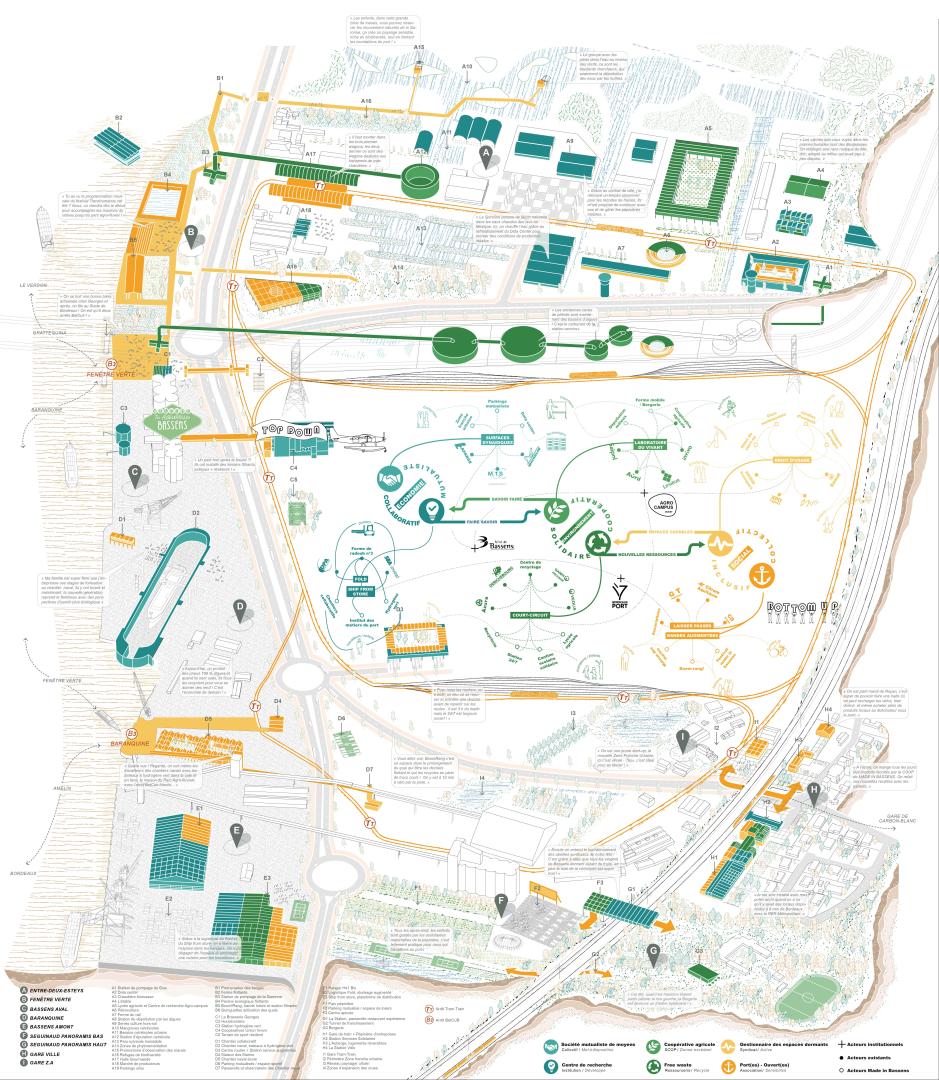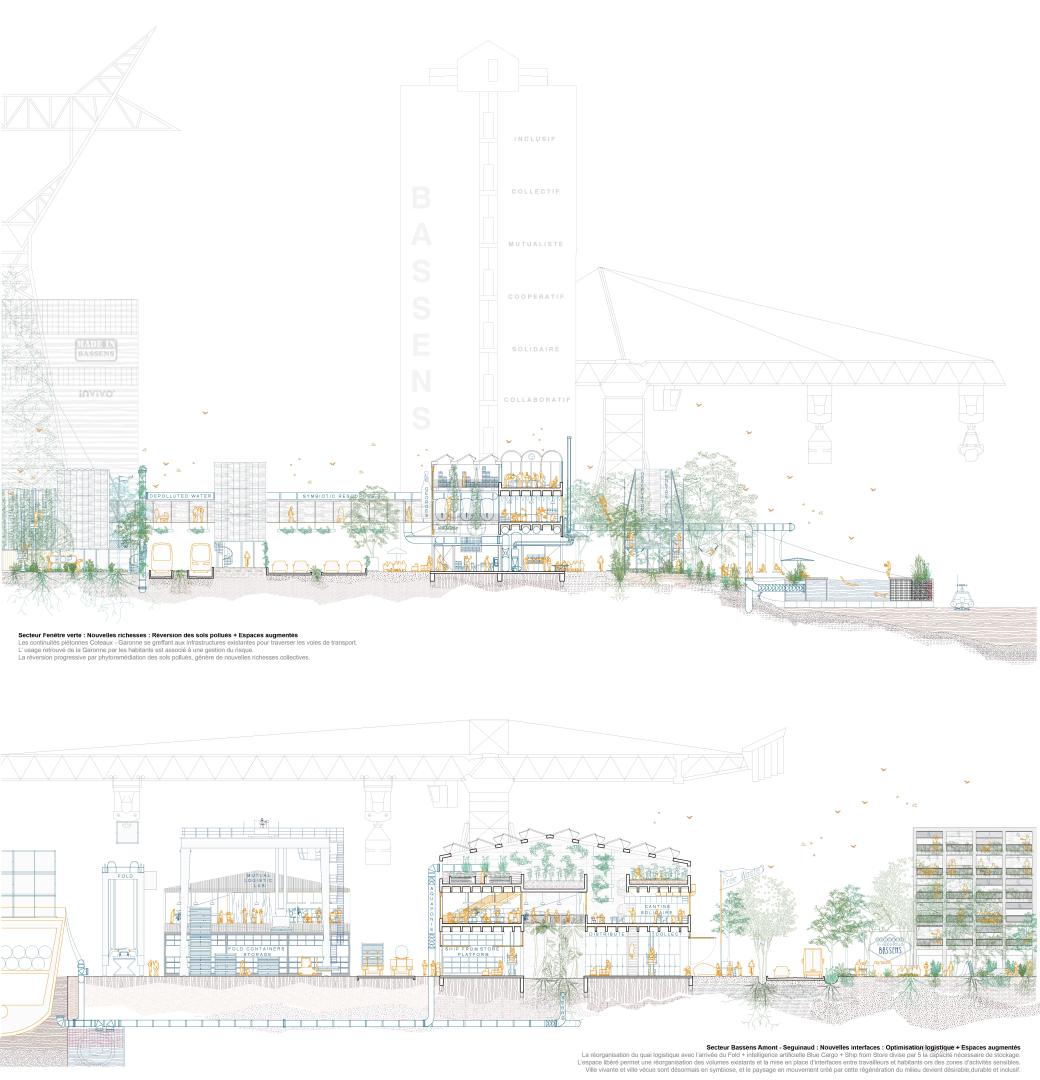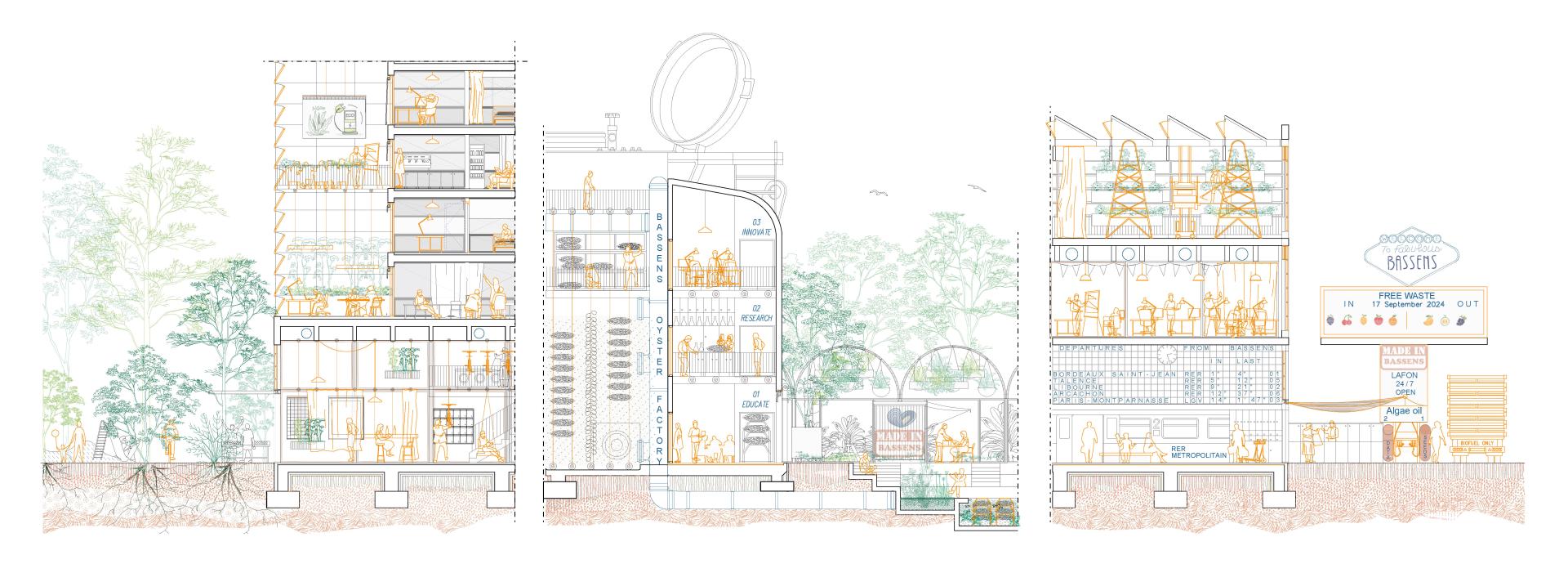SYMBIOTIC BOOM!
Basic information
Project Title
Full project title
Category
Project Description
SYMBIOTIC BOOM! stands for regenerative rather than consuming pattern so we don’t go back to the pre-crisis production model. A system that we were told it was impossible to slow down, is now facing its global limits. Taking account of the fact that resources are becoming scarcer and beyond reach, the symbiotic economy restores soil integrity for a sustainable local productivity. At last it regives to locals collective ground use and shared infrastructures
Geographical Scope
Project Region
Urban or rural issues
Physical or other transformations
EU Programme or fund
Which funds
Description of the project
Summary
DO WE REALLY KNOW THE VALUE OF WHAT IS UNERNEATH OUR FOOT?
SYMBIOTIC BOOM! explores explores patterns of soil regeneration in artificial settings. Although deprived from their genuine values, artificial grounds have more to offer than investment products. We believe Grounds can be considered beyond their "land use"/"land cover" layouts as a collective resource rather than an investment property.
SOILS RESILIENCE IN POST ANTHROPOCENE ERA
Up until now, the Anthropocene has revealed Mankind’s ability to artificialize natural environments in order to maximize profits and pursue Capitalism’s frantic chase for productivity. The port industrial zone of Bordeaux stands as a common place in this post-industrial scheme on the brink of collapse . With the emergence of sustainable mindsets, the usual production processes and exchanges are no longer adequate. Instead of confronting nature and urban society, we prefer using their strengths to create a hybrid intelligence.
SYMBIOTIC BOOM! is a first step towards this new era, where the revamping of the biological ecosystem and the rethinking of production processes meld together and help us reach a perfectly balanced society, offering the best of both worlds.
At the nexus of biotic and abiotic infrastructures, the industrial port territory has the potential to transcend an ownership economy into an economy of usage, through bountiful land and logistic infrastructures. To rethink an urbanized Gaia, we need to reinstate collaborative intelligence in pre-existing human and natural systems. The result is a symbiotic economy where every single element is valued for the potential it carries rather than for its immediate worth.
SYMBIOTIC BOOM! seeks resilience. Through functional hybridization, what is already there can become welcoming. Developing new tools to act forward an urban coexistence between productive activities and living cities, we propose a new pattern to escape zoning plans and top-view layout
Key objectives for sustainability
FROM AUTONOMOUS PRODUCTIVE ISLANDS TO A COLLABORATIVE ARCHIPELAGO
Coexistence indicates the existence of several parallel systems which are unrelated. The naming of the “autonome” port of Bordeaux is a perfect illustration of the state of coexistence between different industries, from different sectors and the landlocked port.
The image of productive islands isolated from one another reads like a succession of contexts and realities each handled individually. The infrastructures linking these islands are actually further isolating them with a monofunctional system.
Symbiose is a lasting and mutually beneficial biological association between two organisms. For the symbiose to operate between the natural biotic world and the abiotic infrastructures, it is necessary to make a network out of the productive islands. Thus, this group of islands will become a collaborative archipelago which transforms waste into new wealth.
SYMBIOTIC BOOM! is a way to pool companies’ means so as to create a more efficient economic tool as well as an exchange interface for complementary activity sectors. Driven by mutual cooperative and collaborative values, hybrid programs may emerge, combining social, economic and environmental functions.
A REGENERATING AND REUSING DYNAMIC
SYMBIOTIC BOOM! in its relationship with all kinds of resources is no longer extracting but regenerating. Ecosystems are progressively restored while still producing more wealth. What was waste in one system is source material for another. Five basic principles frame these exchanges:
- the association of the intelligence of organisms and human activities;
- the short-cycle development of a diversified local production;
- a free and direct collaboration between the ecosystem’s entities;
- a diversity of players and resources preserved by the system’s activity;
- territories that can be accessed through common flows/streams
Key objectives for aesthetics and quality
MAKING THE INVISIBLE VISIBLE
If our senses lost themselves on the port’s tarmac, the hillside offers biotic spaces full of emotion, where the fruits grow, the stars shine, and the wind blows. The symbiotic lens wishes for our senses to come back, all over the territory, through a physical corporeal experience.
At the nexus between visible and invisible, living organisms are recovering their place. In Bassens, our senses are altered by sensorial disturbances:
the atmospheric pollution, the hubbub caused by the handling of containers, the fog due to port activity, the smells emanating from fermenting cereal that is being transported.
Restoring our senses is a form of resilience expressed through living organisms.
SYMBIOTIC BOOM ! aims to help human activities evolve by instating a circular economy based around the recovery of material and immaterial waste. Our suggestion is to start by balancing any negative effects with a data collection system that would detect risks and nuisances. Then, later in time, we would limit this pollution with a modification of production modes.
The re-establishment of our senses makes it possible to self-appropriate rediscovered territory as we are now free to pause and admire it.
The symbiotic lens asks us “Who is in control?” and calls for action. It is first and foremost characterized by the “right to use”. This freedom of action brings the territory alive, it is the soil from which the innovative system of the new societal model may grow.
The acceptation of risk and the appropriate answer to that which we cannot control is not found in a conflict to win the power balance, but rather is contained in the collective intelligence which freed the soil to give it back its resilience. The symbiotic lens is a newfound sensitivity towards the responsibility each and every one of our actions hold.
Key objectives for inclusion
FROM AN ECONOMY BASED ON OWNERSHIP TO AN ECONOMY BASED ON USAGE
SYMBIOTIC BOOM ! chooses an economy based on usage rather than one based on ownership. We do not need to own what we use; we only need to use it. Now that the “right to use” will be allotted to associations and collectives in the near future, the switch to a different economic model confirms people want to share resources in a fairer way. This paradigm shift has truly been willed by the citizens who wish to have a more responsible consumption in order to limit our environmental impact.
This proned model does not impede economic profit yet still guarantees a better social capital which is based on collaboration. To those who want to “produce more to earn more” we answer, “produce better, to share”. A quantitative model cannot last since it is based on the planned obsolescence of its own resources.
What if instead of considering how much is produced, we prioritized a model where the finality isn’t the product, but its usage? Thus, we are no longer selling the product, but rather its sustainability. This switch in economic efficiency inevitably entails environmental efficiency. A good example for this is the Michelin company who are funding research and development for a sustainable tire (made from seaweed). They are no longer selling a tire, but rather the guarantee of a certain number of kilometers for transporters.
SOIL RESILIENCE FOR SOCIAL INCLUSIVENESS
The laboratory of the living, and the institute of jobs pertaining to port business, create a synergy between industrial players, citizens, associations and university establishments.
The symbiotic city does not wait for renewal through big constructions, it is able to “make do” with that which is “already there”. Citizens and institutions may host transient interventions, territorial players are linked throughout the city in circular fashion, enabling the exchange of skills and resources. This strengthens social capital.
Physical or other transformations
Innovative character
-LABORATORY OF THE LIVING - The experimental approach initiated in Bassens relies on the academic world. The laboratory of the living, an Agro Campus satellite, is the perfect anchor for this research partnership. The complementary systems that fit the right environment are tested: the clean-up of the streams freshwater will be done using seaweed, the estuary’s saltwater will be cleaned using oysters. Seaweed can also be used as fuel or can be edible, whereas oysters are refined in canals for local consumption.
The floodable recreational wetland park, created from fast-growing firewood, filters pollution and absorbs the winter floods. This multitude of functions leads to open planning in accordance with the development of resiliency programs.
- REVERS - Artificial soil where productive and logistical usage has ceased is a godsend for experimenting a reversal of our ecological footprint in the environment that is welcomed us. The cleaning up of these surfaces or the reversal of fertile soil places them back in dynamic spaces that can host educational but also productive activities.
- HYBRID - Considering their primary function to be necessary, productive zones are rethought in terms of air volume and not surfaces. Each air volume consumed by the Anthropocene has its equivalent in air volume available.
The peak of making artificial soils launched a reduction of constructed soils to accompany the territory’s resilience when faced with risk. Logistical, productive and cooperative tools enable the pooling of certain material (space, material, transportation) and immaterial (research, shared knowledge) resources.
- LINK - Certain programs activate this new leadership. Once their functional obsolescence is reached, their generous volume allows for a mutation that will answer the issues of tomorrow. The choice of soil that is already artificial is always privileged for construction, while pedestrian continuities bound former disused industrial land banks.

